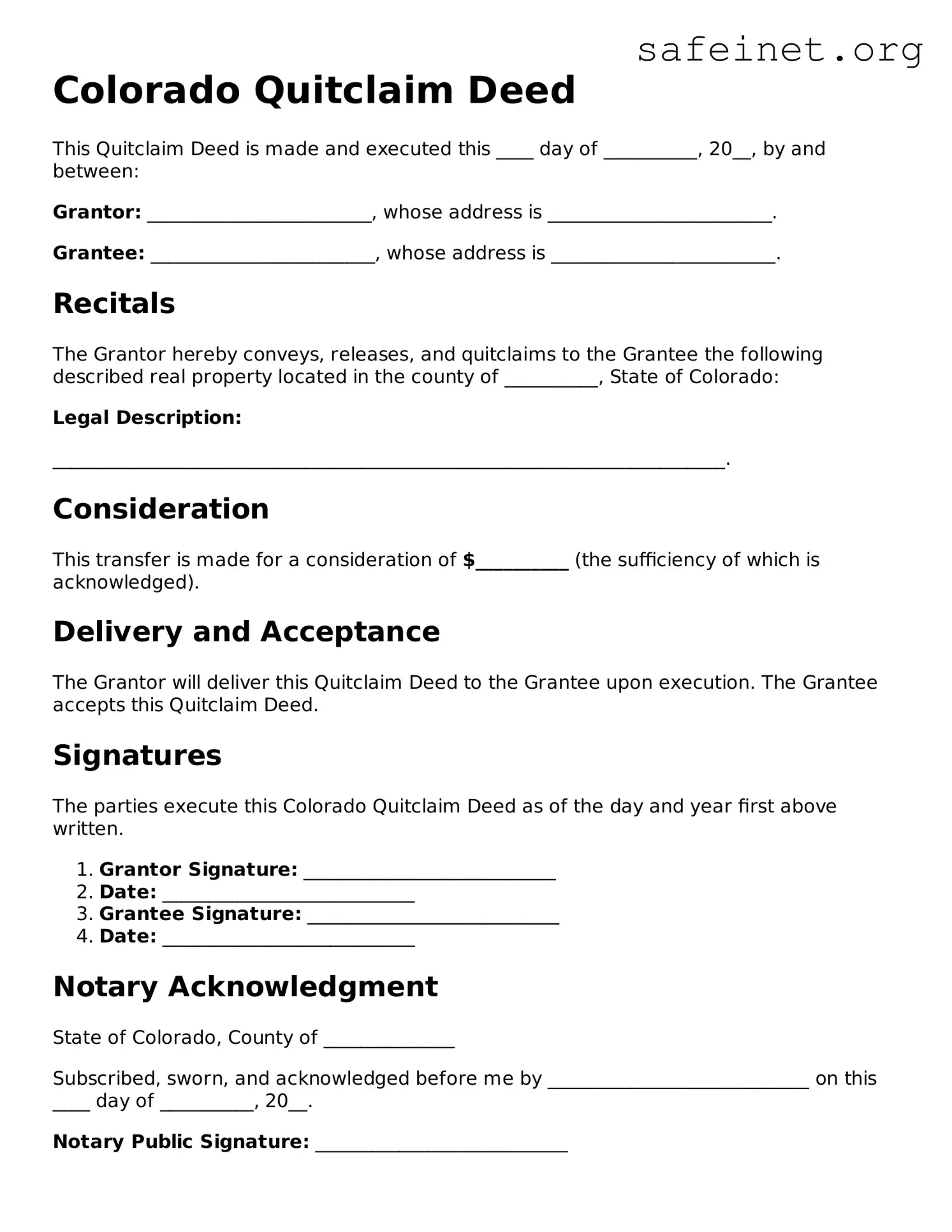Colorado Quitclaim Deed
This Quitclaim Deed is made and executed this ____ day of __________, 20__, by and between:
Grantor: ________________________, whose address is ________________________.
Grantee: ________________________, whose address is ________________________.
Recitals
The Grantor hereby conveys, releases, and quitclaims to the Grantee the following described real property located in the county of __________, State of Colorado:
Legal Description:
________________________________________________________________________.
Consideration
This transfer is made for a consideration of $__________ (the sufficiency of which is acknowledged).
Delivery and Acceptance
The Grantor will deliver this Quitclaim Deed to the Grantee upon execution. The Grantee accepts this Quitclaim Deed.
Signatures
The parties execute this Colorado Quitclaim Deed as of the day and year first above written.
- Grantor Signature: ___________________________
- Date: ___________________________
- Grantee Signature: ___________________________
- Date: ___________________________
Notary Acknowledgment
State of Colorado, County of ______________
Subscribed, sworn, and acknowledged before me by ____________________________ on this ____ day of __________, 20__.
Notary Public Signature: ___________________________
My Commission Expires: ___________________________
